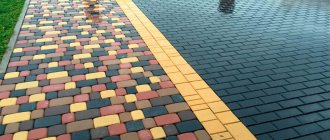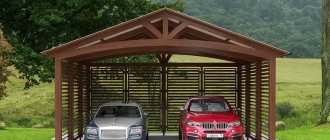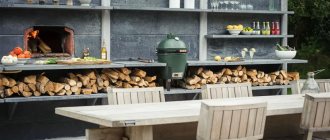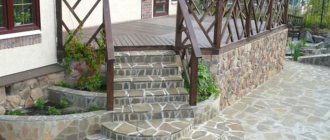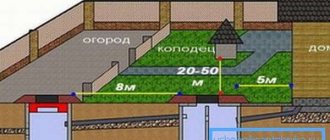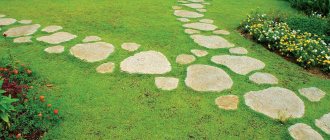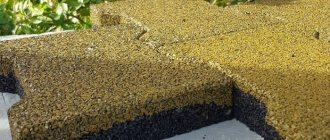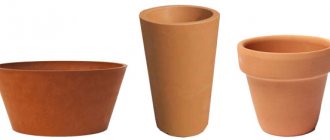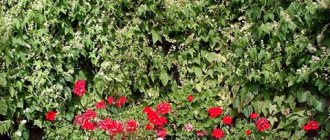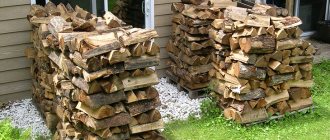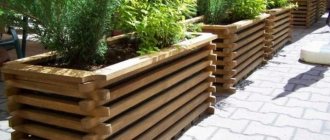Why choose siding: advantages and disadvantages
This type of façade covering has gained a reputation as a practical material that can not only protect a house from external elements, but is also guaranteed to make it attractive.
The reasons why owners decide to cladding a house can be different. Perhaps the external cladding of a wooden house has become less durable over time and has lost its attractiveness. If everything is in order with the walls, you may want to update the appearance. In any case, siding will solve the following problems:
- Protect the facade and make it more beautiful . In the case of wooden walls, the material acts as an alternative to painting. Unlike the latter, the sheathing is installed once for a long period of time, and does not need to be renewed, like paint, every year.
Imitation of stone and plank Source realtyninja.com
- In addition to decorating the exterior, the building receives additional insulation . Thermal insulation based on mineral wool can be performed at any time of the year.
- Future savings . A well-installed insulated frame reduces heating costs in winter and electricity costs in summer (for air conditioning).
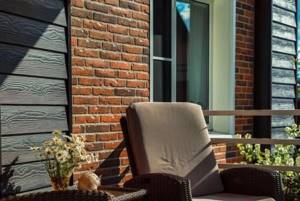
Siding is a collective name for a large group of materials that differ in composition, performance characteristics, appearance and cost. They differ in weight, therefore, they give different loads on the foundation. There are positive qualities inherent to one degree or another in all materials. The following advantages are considered common:
- The finish is impervious to changes in temperature and humidity and does not deform with changing seasons. External wall repairs are postponed for many years, which means the building will last much longer.
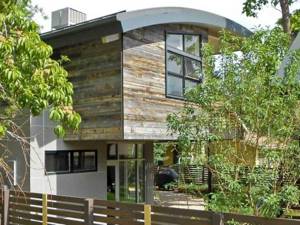
Imitation wood Source centennialwoods.com
- Easy installation . The cladding is carried out using well-developed technology; most types of siding can be handled independently.
- High wear resistance . The material does not attract insects and mold does not develop on it.
- Siding sheathing does not require special care.
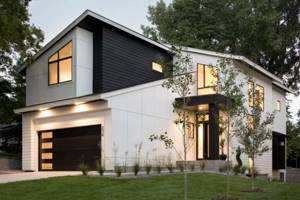
Black and white design Source pillarhomes.com
- Additional protection . Simultaneously with insulation, steam and waterproofing are carried out. Thanks to special films, the dew point moves outward, condensation does not form, and the façade remains dry.
- Design possibilities . Siding is suitable for finishing buildings in any style. It can be combined with other materials, the main thing is to choose a harmonious combination.

The main disadvantage of the material is its low resistance to mechanical damage. Accidental contact may cause scratches, dents or cracks. The disadvantage of panel material is that it cannot be restored; a damaged panel will have to be replaced, which will require additional expenses.
Different types of panels also have other disadvantages: flammability (with the release of toxic combustion products), poor tolerance to prolonged frosts, low level of environmental friendliness. These features must be taken into account when choosing cladding for your home.
The protective frame of any siding increases the life of the house. The properties of the cladding and its strength characteristics will depend only on the chosen technology. The service life of the cladding ranges from 30 to 50 years.
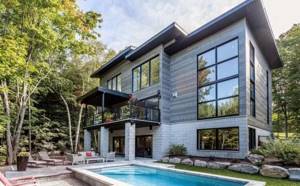
Gray and white siding with different textures Source gambrick.com
See also: Catalog of companies that specialize in finishing materials and related work
Types of siding
Not only the design of houses covered with siding is important, but also the functionality of the external cladding. To choose the optimal material, you need to understand the features of different types of siding and be able to compare the totality of their characteristics. The panels must comply with the operating conditions, as well as the technical characteristics of the facade and foundation.
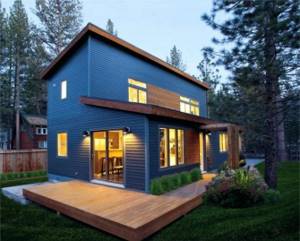
Cladding in a brown-blue palette Source crismatec.com
Vinyl
Vinyl panels (PVC) are the most common type of cladding for private houses and cottages. They successfully combine light weight, affordable price, variety of textures and colors, many of which successfully imitate wood or brick cladding.
Vinyl siding increases the curb appeal of a home while offering some of the lowest installation costs. Manufacturers offer PVC panels of different sizes, which increases the convenience of their installation on complex facades.
The service life of the material is quite long, but inferior to other varieties. The disadvantages of plastic include its relative fragility and vulnerability to fire.
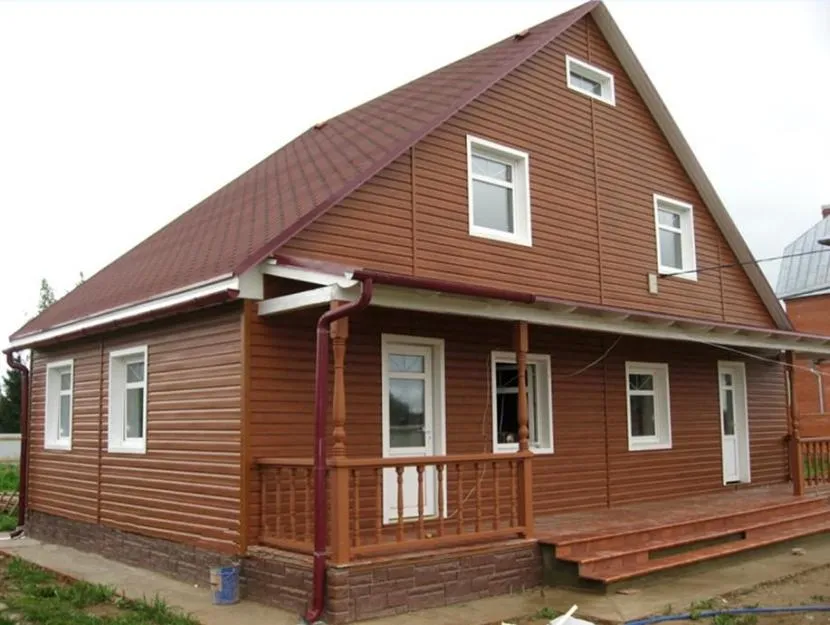
Wood-look vinyl siding Source suomik.com
Metal
High-quality, lightweight and budget panels, competing in popularity with their vinyl counterparts. They are the choice if they want to get a façade design that is resistant to temperature changes and other vagaries of nature.
Metal siding is made of aluminum and steel, the surface of the metals is protected with a layer of zinc and coated with paint (powder coating) or polymer. The flexibility of the metal makes it possible to produce panels that imitate a round log or a block house. Disadvantages of panels are a tendency to deformation and corrosion; the latter property forces additional processing of the edges of the panels during installation.
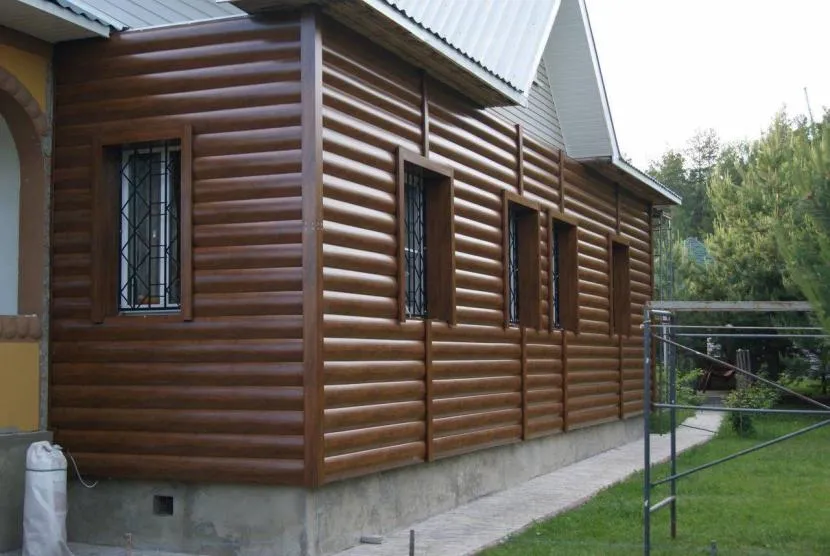
Metal finishing for a block house Source stroy-kt.ru
Wood
The main advantage of wooden siding (planken) is its naturalness. The aesthetic surface of beautiful siding is appreciated by adherents of environmentally friendly and modern design trends. Before the advent of modern vinyl and metal panels, planken was the most popular facing material providing good thermal insulation.
Planken lost its position due to its relative high cost, shorter service life, and tendency to deform. It is also abandoned due to difficult maintenance: wooden cladding will have to be regularly updated and treated with protective agents.
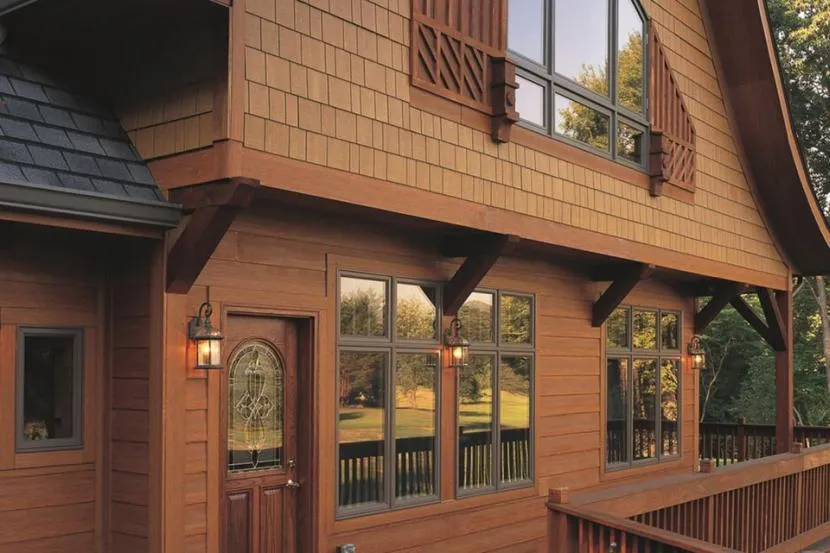
Wood siding Source pinimg.com
How to use siding in design
Thanks to the variety of modern siding coatings, the question of how to beautifully cover a house with siding has an almost unlimited number of solutions. Owners who decide to clad the facade have access to panels in any color from the PAL catalog, as well as finishing with natural materials: wood, natural stone, brick.
The material is used for finishing the facades of brick, wooden, frame houses; To make the building look stylish and unusual, the following techniques are used:
- Natural shades of the panels are selected to make the house seem like a continuation of the surrounding space.
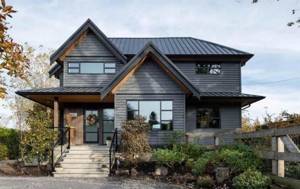
In natural shades Source pinimg.com
- They choose interesting combinations: rich colors look beautiful with a tile or slate roof.
- If the facade is constantly illuminated by the sun, choose siding in light shades, since it is not so susceptible to fading.
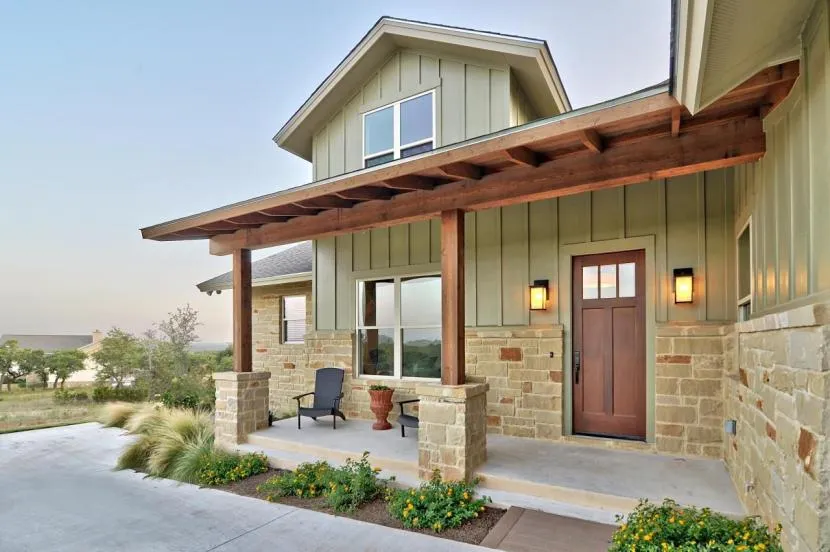
Country style Source pinimg.com
- If the facade material has the form of lamellas (planks), installation can be carried out not only horizontally, but also vertically, using the same material. Some manufacturers have special vinyl siding for vertical installation.
- They use a house siding design in two colors. This technique works especially well when choosing a contrasting finish to highlight the foundation, window area, and corners of the house.
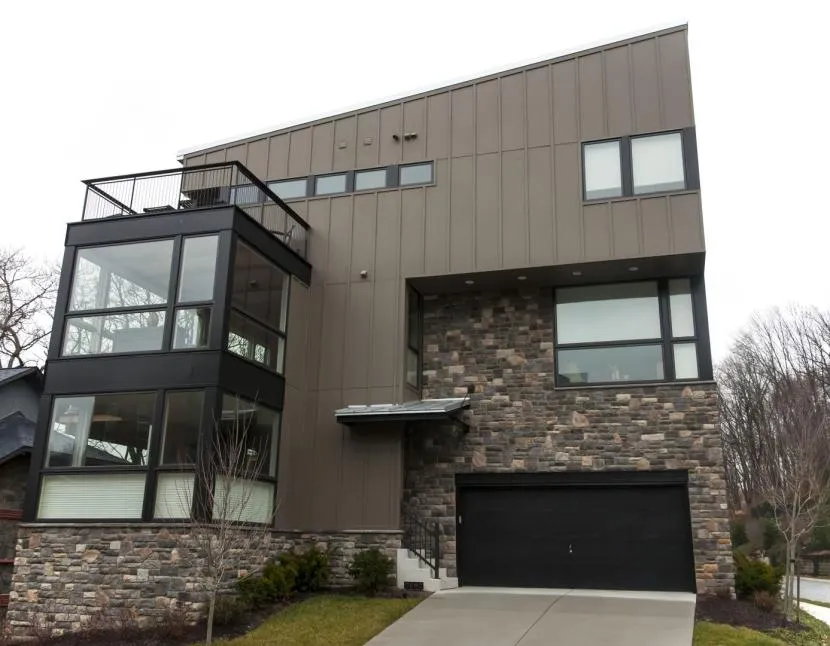
Vertical installation Source pinimg.com
- Fragmented cladding, when only part of the facade (for example, the pediment) is covered with siding, gives the house an original look.
- In the decoration of the facade, you can use materials that imitate different textures, for example, wood and stone, or wood and brick. This way you can decorate a chalet-style cottage or an English-style country house.
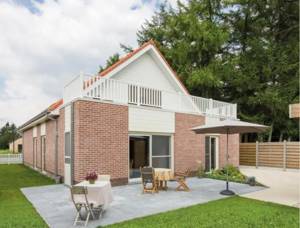
White wood and brick siding Source eternit.ru
Wall panels, or a jacket for the facade
Siding in English simply means “cladding” used on the outside of a building to protect it from the elements. Quite conventionally produced panels can be divided into wall and plinth panels. Among the first, in addition to the traditional forms, varieties of new designs appeared, imitating cedar shingles and wood chips.
1 - beaver tail
3 — shingles with offset
They are made from both natural wood and PVC, and vinyl ones are much more durable and do not require restoration. And their perfect resemblance to natural material (down to the pattern of annual rings) is ensured by computer technology. Finishing a wooden house using this imitation is much cheaper.
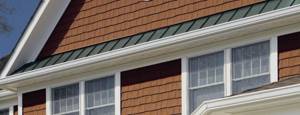
7. Facade in brown tones of natural cedar chips with white additional elements
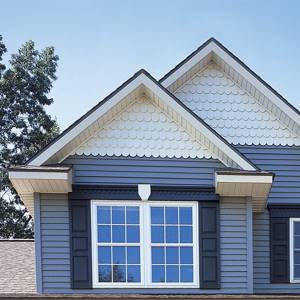
8. The combination of blue and white in the decoration of the façade of the house exudes frosty freshness; the pediment is finished in the shape of a “beaver tail”
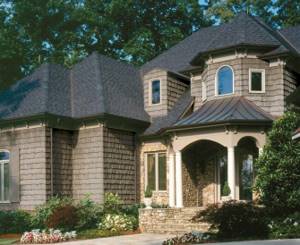
9. Amazingly beautiful façade of an English cottage using offset chip siding and stone siding for the plinth
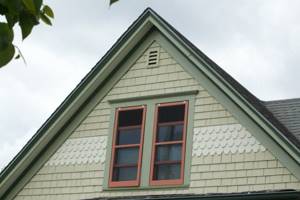
10. By combining different shapes you can create a unique pattern on the facade and pediment
The blockhouse, an imitation of a round log, is very popular. It is especially often used for private wooden frame buildings. It is well suited for the restoration of old buildings, and in new buildings it is necessary to withstand a period of shrinkage.
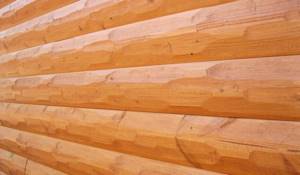
11. Some manufacturers imitate a rough-hewn log so skillfully that it is difficult to distinguish it from the real thing.
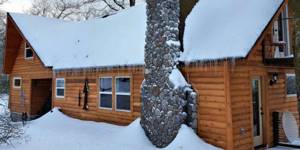
12. Scandinavian style house design using a blockhouse
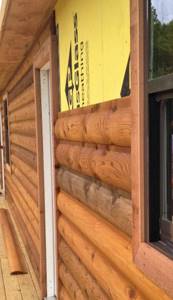
13. The surface has a natural pattern of wood and a wormhole.
Briefly about the main thing
Manufacturers offer siding materials for every taste, which allows them to be used for decorating houses in any style. In addition to the aesthetic component, the functionality of the panels is also important: they help to insulate the house, protect the facade from aging and save on utility costs.
Siding is chosen based on the operating conditions of the building. The material is distinguished by the raw materials from which it is made; Popular types include vinyl, metal, and wooden varieties. Panels made of fiber cement and ceramics are beautiful and durable, but they are less expensive. You can create stylish siding by combining different façade siding in color and texture.
Ratings 0
Facade cladding with metal siding
The most common design option for the façade of buildings is a combination of materials. For example, siding is combined with stone masonry, metal with wood, and the surface of the material is also combined with a textured and smooth surface.
The cladding of semicircular surfaces with metal panels, as well as various arches and other shapes with roundness, looks original.
When combining finishing materials for the façade of buildings, the main thing is to do everything in moderation so that everything fits together harmoniously. But as for the color scheme, you can think about it. After all, not a single shade of gray can surprise anyone for a long time!
